What is the difference between Formula 1 and NASCAR?
NASCAR and F1 are the two heavy weights of the motorsports realm and have entertained fans since 1949 and 1950 respectively.
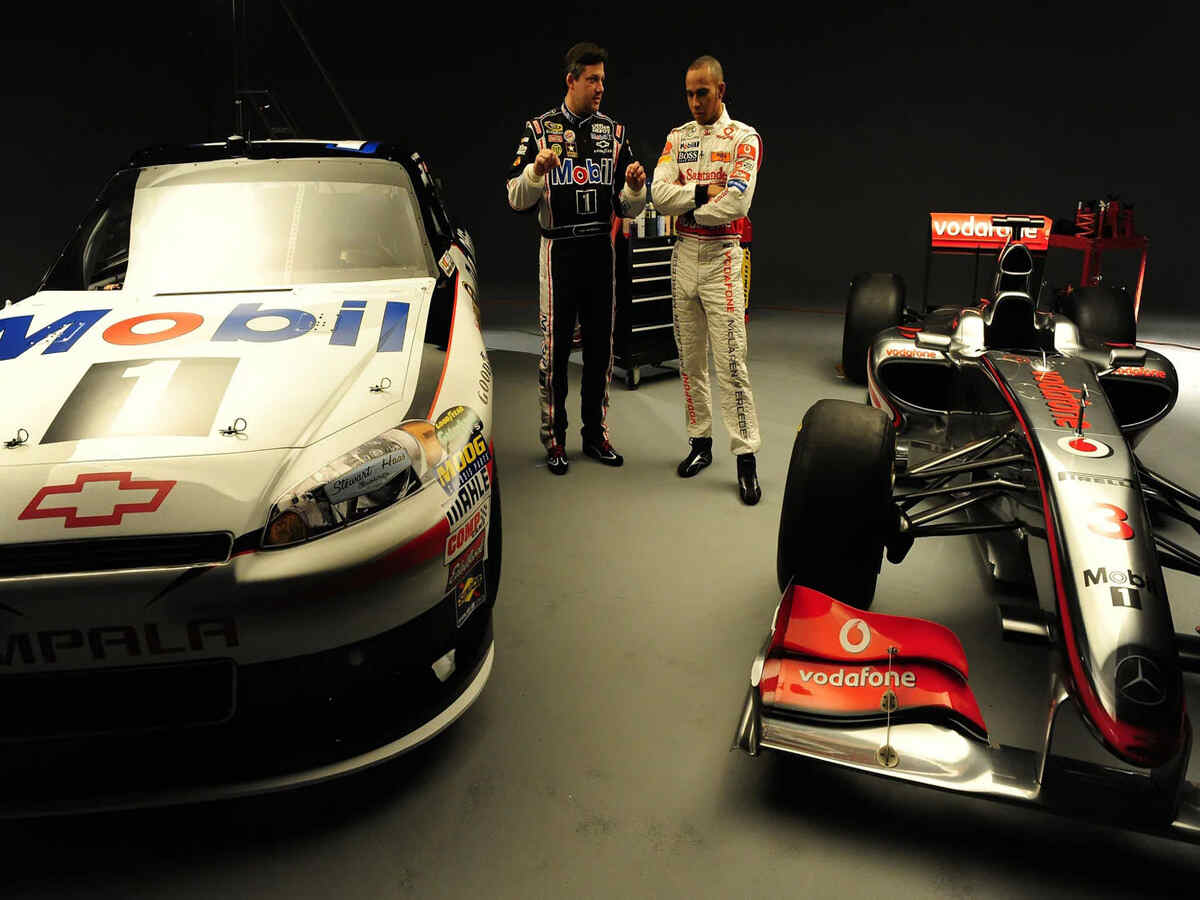
🔍 Explore this post with:
F1 and NASCAR, two of the most prominent motorsports in the world, ignite the passion of racing enthusiasts with their exhilarating competition and high-speed action. While these sports may share some similarities, one fundamental distinction sets them apart: the design of their cars. F1 represents the realm of open-wheel racing, where sleek, aerodynamic machines zoom around the tracks.
On the other hand, NASCAR embodies the realm of closed-wheel racing, featuring powerful stock cars that thunder down the ovals. This key differentiation influences various aspects of these sports, including championship models, car designs, tracks, drivers, driver salaries, and fan bases. Delve into the captivating world of F1 and NASCAR, exploring the nuances that make them stand apart from each other and captivate their respective audiences.
Discover: Who has led the most consecutive laps in F1?
What is the difference between the championship models of F1 and NASCAR?
NASCAR and Formula 1 follow distinct championship models. NASCAR’s season comprises at least 36 races, including the All-Star race and pre-season exhibition race, bringing the total to 38. In contrast, Formula 1 features 24 (from 2024) races annually. Both championships culminate in the crowning of a champion, but the path to achieving that title diverges.
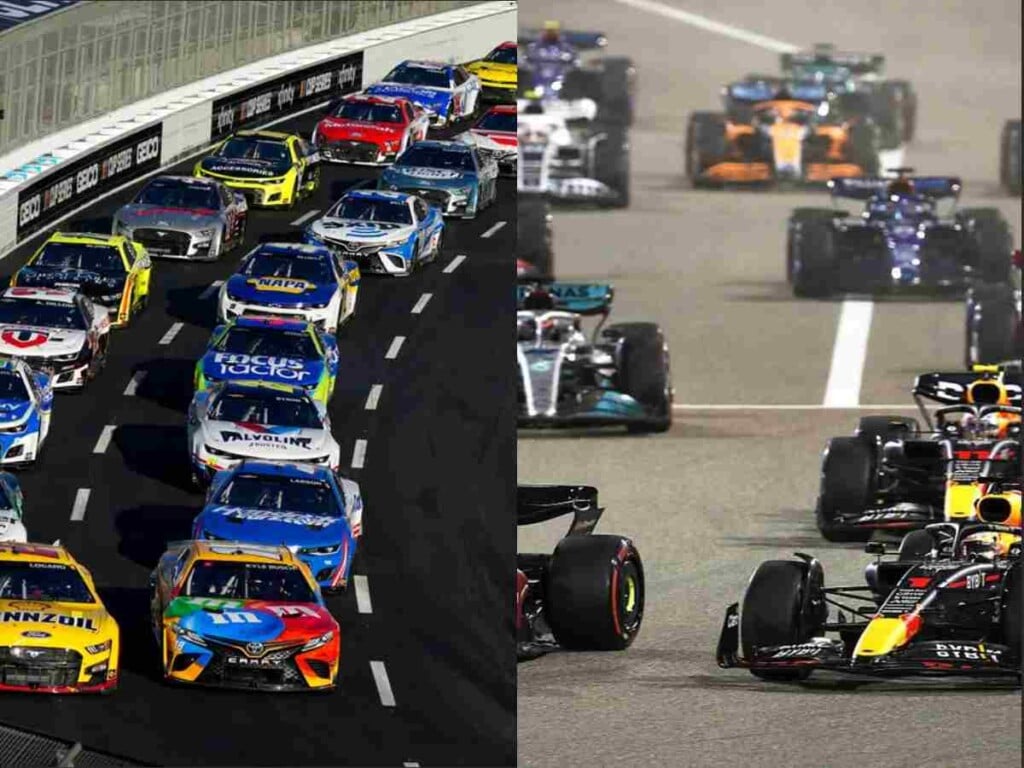
NASCAR awards points to drivers based on their finish position in each race, ranging from 40 points for the winner to 1 point for the last-place finisher. Conversely, Formula 1 only grants points to the top ten drivers, with the winner earning 25 points and the tenth-place finisher receiving one point.
What is the difference between an F1 car and a NASCAR car?
The engineering of NASCAR and Formula 1 vehicles focuses on optimizing performance for their specific racing conditions, resulting in noticeable differences. Formula 1 teams design and manufacture their cars, while a single manufacturer constructs NASCAR vehicles.

NASCAR cars are longer, broader, and heavier than their F1 counterparts. F1 cars prioritize being smaller, lighter, and more aerodynamic. Formula 1 vehicles feature sharp noses to cut through the air and minimize resistance, while NASCAR cars resemble four-person automobiles with bumpers and fenders.
F1 cars employ a 1.6-liter V6 Turbo engine with approximately 1000 horsepower, delivering remarkable acceleration. In contrast, NASCAR cars rely on V8 engines, producing around 750 horsepower, enabling them to endure longer races and contact with other cars.
What is the difference between the F1 tracks and NASCAR tracks?
The tracks used in NASCAR, and Formula 1 races contribute to the distinct experiences of each sport. F1 circuits are intricate, featuring a combination of right and left turns that demand precise handling and rapid changes in direction. NASCAR tracks are predominantly ovals, where drivers must navigate numerous left turns, requiring skillful maneuvering in close-quarters racing.
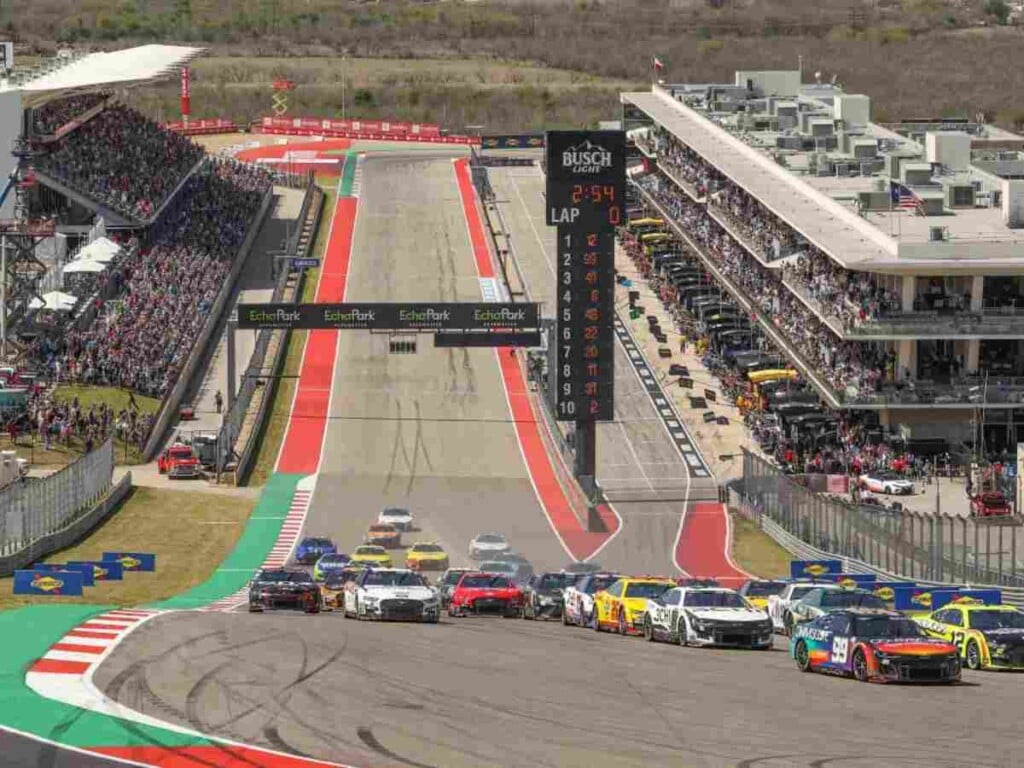
While F1 tracks feature both street circuits and traditional race circuits, NASCAR majorly has ways that are exclusive or wheel-to-wheel racing. F1 tracks are spread across all the continents, but NASCAR tracks reside only in the United States of America.
How do F1 drivers and NASCAR drivers differ?
Due to the disparities in cars and racecourses, NASCAR and Formula 1 drivers develop diverse skill sets and driving styles. F1 drivers come from different countries across all the continents of the world. At the same time, NASCAR drivers are majorly American-born racers. There are just a few examples of non-American drivers who have competed and succeeded in NASCAR.

F1 drivers must excel in handling high-speed bends and rapid direction changes. On the other hand, NASCAR drivers specialize in navigating frequent left turns and excelling in close-quarters racing. F1 drivers must react swiftly to changing conditions and make split-second judgments. NASCAR drivers must maintain focus and concentration for extended periods.
What is the difference between the salaries of F1 drivers and NASCAR?
Regarding earnings, F1 drivers generally command higher salaries than their NASCAR counterparts. The top earners in Formula 1 can make up to $50 million annually, whereas the highest-paid NASCAR drivers earn less than $20 million. On average, F1 drivers earn $11.4 million, with top earners reaching $50 million, while NASCAR drivers earn an average of $13.7 million, with the lowest earners starting around $200,000.
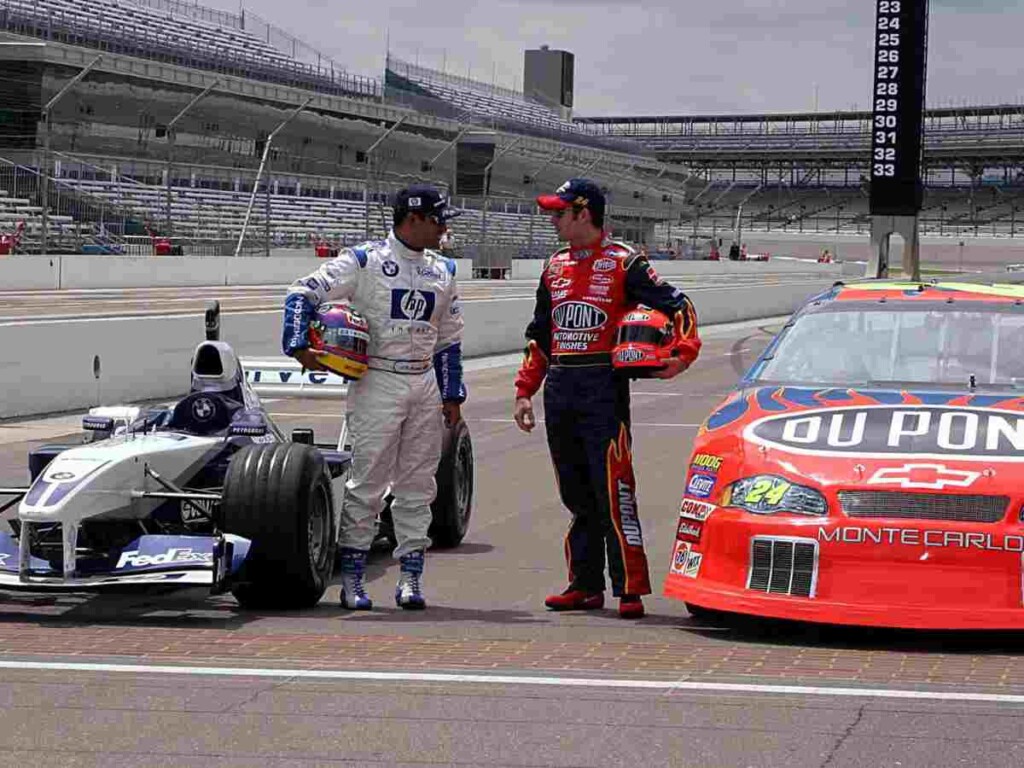
F1 drivers often receive compensation through salary, bonuses, sponsorships, and endorsements, while NASCAR drivers are primarily compensated by their teams. Max Verstappen is the highest-paid F1 driver, boasting a commendable $55 Million. In comparison, Kyle Busch, with a salary of $16.9 million in 2023, is the highest-paid NASCAR driver.
How does the fan base of F1 compare to that of NASCAR?
Formula 1 boasts a larger worldwide fan base, with an estimated 4 million attendees at races annually, compared to 3.5 million for NASCAR. F1’s international appeal stems from its global presence, with races on five continents. In contrast, NASCAR’s fan base is primarily concentrated in the United States, firmly embedded in the nation’s sporting culture. Despite its more localized following, NASCAR enjoys a strong all-American history and a dedicated domestic fan base.

However, NASCAR surpasses F1 in yearly earnings, generating approximately $3 billion worldwide compared to F1’s $1.5 billion. F1 also attracts larger crowds, with 419,114 attendees at the Australian Grand Prix weekend, while the largest NASCAR event had around 150,000 spectators for the Daytona 500.
The prize money for winning a race in F1 and NASCAR varies significantly. In F1, teams and drivers compete for a share of the substantial prize pool, distributed based on performance. NASCAR, on the other hand, offers significant rewards for race winners, with the winner of a race taking home an average of $47,500.
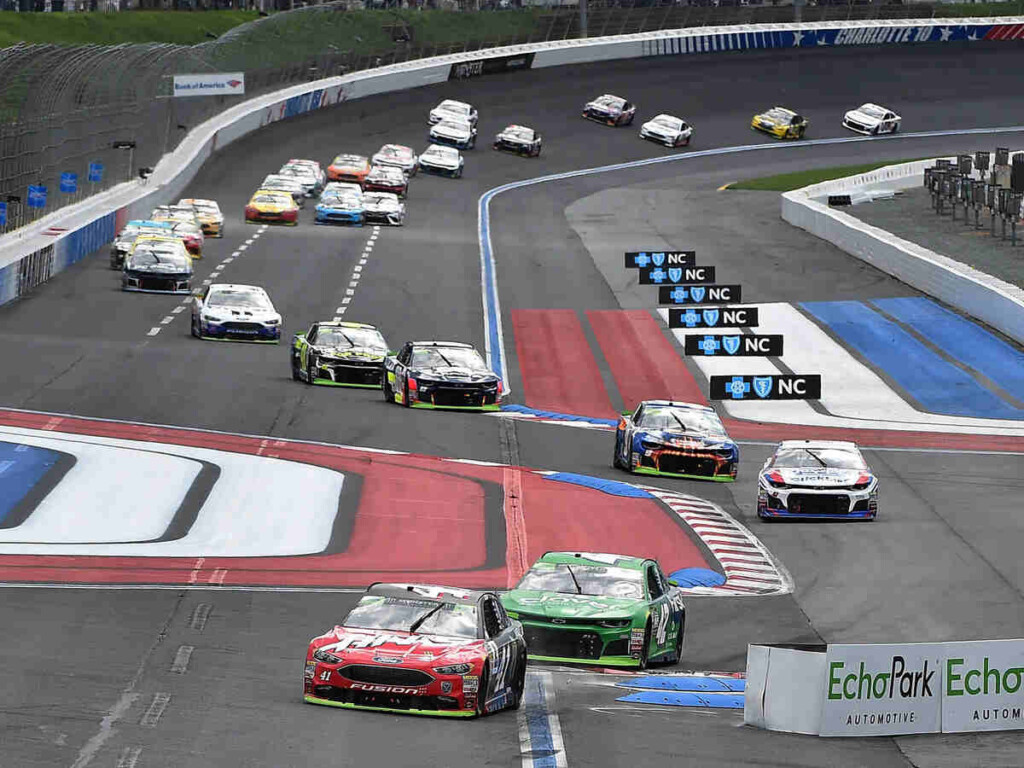
The top-earning NASCAR driver, Kyle Busch, earned $17.8 million in 2019 from various sources, making him one of the richest drivers in NASCAR history. The Daytona 500, the most lucrative race in NASCAR, had a total purse of approximately $24.6 million in 2022, with the winner potentially earning between 1.5 to 2 million dollars.
NASCAR and Formula 1 may share a passion for high-speed racing, but they differ significantly regarding championship models, cars, tracks, drivers, driver salaries, and fan bases. While F1 emphasizes intricate circuits, nimble cars, and international competition, NASCAR focuses on endurance, close-quarters racing, and a distinctly American tradition. Both sports offer unique thrills and captivate audiences worldwide, making them indispensable components of the global motorsport landscape.
FAQ’s
F1 drivers are paid more as the top earns up to $50 million, while in NASCAR, the top earners get $20 million.
36-point paying races compared to the 24 races in F1
NASCAR cars are much heavier than F1 cars. Stock cars are five times more weight than open-wheel cars.
In case you missed it:







